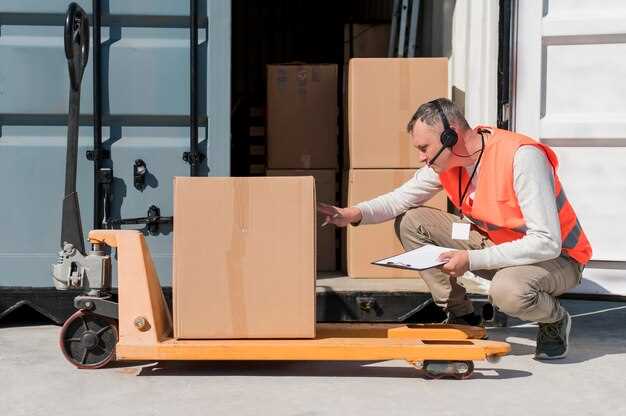
Effective cargo hauling is a critical aspect of logistics that demands careful attention to weight distribution. Proper weight distribution not only enhances safety but also improves vehicle performance and fuel efficiency. Uneven weight across a vehicle can lead to dangerous situations, such as loss of control, tire blowouts, and increased wear on the equipment. Understanding how to balance weight efficiently is essential for operators and businesses involved in transporting goods.
Various factors influence the safe hauling of cargo, including vehicle type, load characteristics, and route conditions. Establishing a systematic approach to weight distribution can prevent accidents and ensure compliance with legal weight limits. Additionally, utilizing equipment such as weight scales and load binders allows for precise adjustments to maintain an optimal balance throughout the journey.
In this article, we will explore essential techniques for balancing weight in cargo hauling, emphasizing the importance of load securement, the impact of center of gravity, and best practices for different vehicle configurations. By implementing these strategies, operators can significantly reduce the risk of incidents while maximizing operational efficiency.
Understanding Weight Distribution for Different Cargo Types

Proper weight distribution is crucial for maintaining stability and safety during transportation. Different cargo types require unique considerations to ensure balance and prevent accidents.
1. Bulk Cargo: Bulk materials, such as grains, coal, and minerals, are usually transported in large quantities. For bulk cargo, weight should be spread evenly across the cargo hold to prevent shifting during transit. This can be achieved by filling the hold from the bottom up and ensuring that the center of gravity remains low.
2. Containers: Containerized cargo is often more straightforward to manage due to standardized dimensions. However, it is essential to distribute weight within the container itself. Heavier items should be placed at the bottom and towards the center, while lighter items can be secured on top. This arrangement helps maintain a low center of gravity and reduces the risk of tipping.
3. Heavy Equipment: When transporting heavy machinery, the weight distribution is critical. Securing the equipment in a way that keeps the load centered can prevent excessive sway and instability. Additionally, using specialized trailers with low decks can improve stability and ease loading and unloading processes.
4. Liquid Cargo: Tanks carrying liquids require particular attention to weight distribution due to the liquid’s movement. Baffles and partitions within the tank can help minimize sloshing, which can shift weight unexpectedly. Ensuring that liquid loads are evenly distributed and within recommended weight limits is essential for maintaining vehicle stability.
5. Fragile Items: When hauling fragile or breakable goods, weight distribution should prioritize protection. Placing lighter, more delicate items on top of heavier sacks or boxes can prevent damage during transit. Protective padding and securing methods should also be employed to minimize movement and impact.
Understanding the unique requirements of each cargo type allows for effective weight distribution strategies. By considering these factors, transport operators can enhance safety, ensure compliance with regulations, and improve overall efficiency during cargo hauling.
Techniques for Securing Load to Prevent Shifting
Securing cargo effectively is essential for safe transportation. Proper load securing techniques help prevent shifting during transit, which can lead to accidents and damage. Here are several methods to ensure your cargo remains stable and secure.
First, use appropriate straps and ties. Ratchet straps are highly effective for securing loads against movement. They provide adjustable tension and are easy to operate. Ensure you select straps rated for the weight of the cargo, and inspect them before use for any signs of wear or damage.
Next, consider using cargo nets. These can be draped over irregularly shaped loads to keep items in place. Ensure that the netting is tightly secured to avoid any loose ends that could tangentially shift during transport. Cargo nets work well in conjunction with other securing methods, providing an additional layer of security.
Blocks and chocks are essential for stabilizing cargo, particularly for heavy or wheeled items. Placing wooden or plastic blocks against the load can prevent it from rolling or sliding. Chocks should be positioned properly to create a wedge effect that locks the cargo in place.
Utilizing dunnage, such as air bags or foam, can also help fill gaps between items. This prevents shifting by absorbing vibrations and movements during transit. Using dunnage is particularly useful for fragile items requiring extra cushioning.
Finally, ensure proper load distribution. Weight should be evenly distributed across the transport vehicle to promote stability. Avoid placing too much weight on one side, as this can lead to tipping or swaying while in motion. Loading techniques, such as lowering the center of gravity, can greatly enhance stability.
By employing these techniques, you can effectively secure your cargo and minimize the risk of shifting during transport. Regularly reviewing and adjusting your securing methods will contribute to safer hauling practices and protection of your goods.
Real-Life Case Studies on Weight Balancing Failures and Lessons Learned

Weight balancing plays a critical role in the safety and efficiency of cargo hauling. Numerous incidents have highlighted the dire consequences of neglecting this crucial aspect. This section examines several real-life case studies that illustrate the failures in weight balancing and the important lessons derived from these experiences.
Case Study 1: The Collapse of a Flatbed Truck
In 2019, a flatbed truck transporting heavy construction materials experienced a catastrophic failure when a significant portion of the cargo shifted during transit. The truck was overloaded on one side, resulting in a loss of control and a rollover incident on a busy highway. Investigation revealed that the load distribution was not adequately assessed prior to departure.
Lesson Learned: Proper weight distribution and regular checks during transportation are essential to maintain balance and prevent accidents. Implementing a system for load checks and employing experienced personnel can mitigate such risks.
Case Study 2: Shipping Container Disaster
In another incident in 2021, a shipping container was reported to have toppled in a harbor due to improper stacking techniques. The heavy container was placed on top of lighter materials without considering the weight distribution. This imbalance not only damaged other containers but also delayed operations and incurred significant financial losses.
Lesson Learned: Ensuring appropriate stacking protocols for shipping containers can prevent similar incidents. Training personnel on weight balancing principles and adhering to guidelines can significantly enhance safety and operational efficiency.
Case Study 3: Aircraft Cargo Shift
A cargo airline faced a serious incident when the luggage in the cargo hold shifted mid-flight due to poor weight balancing. The center of gravity for the aircraft was adversely affected, leading to difficulty in flight control. Fortunately, the crew managed to stabilize the aircraft and landed safely, but the incident prompted a thorough review of cargo loading procedures.
Lesson Learned: This case emphasized the importance of adhering to established loading protocols, and the need for airlines to implement rigorous training and testing for cargo handling staff to avoid similar occurrences.
Case Study 4: Truck Trailer Incident
A trucking company experienced losses when one of its trailers overturned while navigating a sharp turn. The trailer was loaded heavier on the rear axle, leading to reduced stability. Investigation revealed that the driver failed to check load placement and weight distribution before hitting the road.
Lesson Learned: Comprehensive pre-trip inspections and real-time monitoring of weight distribution can prevent such accidents. Regular training sessions for drivers on load balancing techniques can enhance safety on the roads.
In conclusion, these case studies highlight the vital importance of weight balancing in cargo handling. The collected insights emphasize that understanding and implementing effective weight distribution practices can significantly reduce risks associated with transportation and cargo handling. By learning from past failures, operators can cultivate a safer and more efficient environment for cargo transportation.




